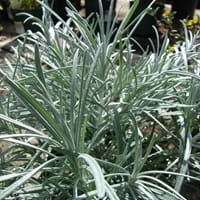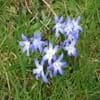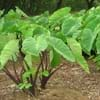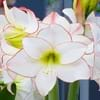Life Span
Perennial
Perennial
Type
Bulb or Corm or Tuber
Tender Perennial
Origin
Mediterranean, Turkey
Central Asia
Types
Not Available
not available
Habitat
meadows, Terrestrial
Dry areas, Hot climate regions, Low annual rainfall regions
USDA Hardiness Zone
3-9
8-11
Sunset Zone
21,22
16, 17, 22, 23, 24
Habit
Clump-Forming
Cushion/Mound-forming
Flower Color
White, Blue, Pink, Violet
Yellow
Flower Color Modifier
Bicolor
Bicolor
Fruit Color
Not Available
Gold, Sandy Brown
Leaf Color in Spring
Green
Gray Green, Silver, Gray
Leaf Color in Summer
Light Green
Gray Green, Silver, Gray
Leaf Color in Fall
Several shades of Green
Gray Green, Silver, Gray
Leaf Color in Winter
Light Green
Light Green
Leaf Shape
Long Linear
Pinnate
Plant Season
Spring, Winter
Spring, Summer, Fall
Sunlight
Full Sun, Partial Sun
Full Sun, Partial Sun
Type of Soil
Loam
Loam, Sand
The pH of Soil
Acidic, Neutral, Alkaline
Neutral, Alkaline
Soil Drainage
Well drained
Well drained
Bloom Time
Early Spring, Late Winter
Early Summer, Summer
Tolerances
Drought
Drought
Where to Plant?
Container, Ground, Pot
Container, Ground, Pot
How to Plant?
From bulbs, Seedlings
Stem Planting
Plant Maintenance
Medium
Medium
Watering Requirements
Average Water Needs, Do Not over Water, Do not water frequently, Keep the ground moist but not water-logged, Never Over-water
Allow to dry out slightly between watering
In Summer
Lots of watering
Adequately
In Spring
Moderate
Moderate
In Winter
Average Water
Average Water
Soil pH
Acidic, Neutral, Alkaline
Neutral, Alkaline
Soil Type
Loam
Loam, Sand
Soil Drainage Capacity
Well drained
Well drained
Sun Exposure
Full Sun, Partial Sun
Full Sun, Partial Sun
Pruning
Remove damaged leaves, Remove dead branches, Remove dead leaves
Prune in spring, Remove dead leaves, Remove shoots
Fertilizers
All-Purpose Liquid Fertilizer
All-Purpose Liquid Fertilizer, Put diluted fertilizers
Pests and Diseases
Red blotch
Black Spot, Caterpillars, Gray mold, Leafminers, Mealybugs, Root rot, Stem rot, Thripes, Whiteflies
Plant Tolerance
Drought
Drought
Flower Petal Number
Single
Single
Fragrant Bark/Stem
No
Yes
Foliage Texture
Fine
Medium
Foliage Sheen
Matte
Matte
Attracts
Bees, Flying insects
Not Available
Allergy
Skin rash
Not Available
Aesthetic Uses
Beautification, Bouquets, Ground Cover, Showy Purposes
Not Used For Aesthetic Purpose
Beauty Benefits
Not Available
Good for the Scalp, Improve hair condition, Improve skin condition, Improve skin tone, Natural Sunscreen, Nourishes scalp, Prevents Premature Baldness, Speed hair growth
Environmental Uses
Air purification
Not Available
Medicinal Uses
No Medicinal Use
Asthma, Cramps, Menopause problems, Menstrual Disorders, Oral health, Respiratory Disorders, Skin Disorders, Skin irritation, Weight loss
Part of Plant Used
Flowers
Root, Root bark
Other Uses
Decoration Purposes, Showy Purposes, Used as Ornamental plant
Used As Food, Used for its medicinal properties
Used As Indoor Plant
Yes
No
Used As Outdoor Plant
Yes
Yes
Garden Design
Alpine, Container, Foundation, Lawns and Turf, Mixed Border, Rock Garden / Wall, Wildflower
Container, Edging, Hanging Basket, Mixed Border, Rock Garden / Wall
Botanical Name
CHIONODOXA
HELICHRYSUM thianschanicum
Common Name
Chionodoxa, Glory-of-the-Snow
Licorice Plant
In Hindi
Chionodoxa
मुलैठी
In German
Chionodoxa
Lakritze
In French
Chionodoxa
réglisse
In Spanish
Chionodoxa
regaliz
In Greek
Chionodoxa
γλυκόρριζα
In Portuguese
Chionodoxa
alcaçuz
In Polish
Chionodoxa
lukrecja
In Latin
Chionodoxa
liquorice
Phylum
Platyhelminthes
Tracheophyta
Class
Cestoda
Magnoliopsida
Family
Liliaceae
Asteraceae
Genus
Chionodoxa
Glycyrrhiza
Clade
Angiosperms, Monocots
Angiosperms, Eudicots
Tribe
Not Available
Galegeae
Subfamily
Not Available
Faboideae
Number of Species
Not Available
Difference Between Chionodoxa and Liquorice
If you are confused whether Chionodoxa or Liquorice are same, here are some features about those plants to help you choose better. Many people think that these two plants have the same characteristics, but one can see Chionodoxa and Liquorice Information and learn more about it. Fertilizers required for proper growth of Chionodoxa are All-Purpose Liquid Fertilizer, whereas for Liquorice fertilizers required are All-Purpose Liquid Fertilizer and Put diluted fertilizers. Hence, one should know the basic difference between Chionodoxa and Liquorice if you are planning to have them in your garden to enhance its beauty.
<
Flowering PlantsImportance of Chionodoxa and Liquorice
Want to have the most appropriate plant for your garden? You might want to know the importance of Chionodoxa and Liquorice. Basically, these two plants vary in many aspects. Compare Chionodoxa and Liquorice as they differ in many characteristics such as their life, care, benefits, facts, etc. Every gardener must at least have the slightest clue about the plants he wants to plant in his garden. Compare their benefits, which differ in many ways like facts and uses. The medicinal use of Chionodoxa is No Medicinal Use whereas of Liquorice is Asthma, Cramps, Menopause problems, Menstrual Disorders, Oral health, Respiratory Disorders, Skin Disorders, Skin irritation and Weight loss. Chionodoxa has beauty benefits as follows: Not Available while Liquorice has beauty benefits as follows: Not Available.
Compare Facts of Chionodoxa vs Liquorice
How to choose the best garden plant for your garden depending upon its facts? Here garden plant comparison will help you to solve this query. Compare the facts of Chionodoxa vs Liquorice and know which one to choose. As garden plants have benefits and other uses, allergy is also a major drawback of plants for some people. Allergic reactions of Chionodoxa are Skin rash whereas of Liquorice have Not Available respectively. Having a fruit bearing plant in your garden can be a plus point of your garden. Chionodoxa has no showy fruits and Liquorice has no showy fruits. Also Chionodoxa is not flowering and Liquorice is not flowering . You can compare Chionodoxa and Liquorice facts and facts of other plants too.





